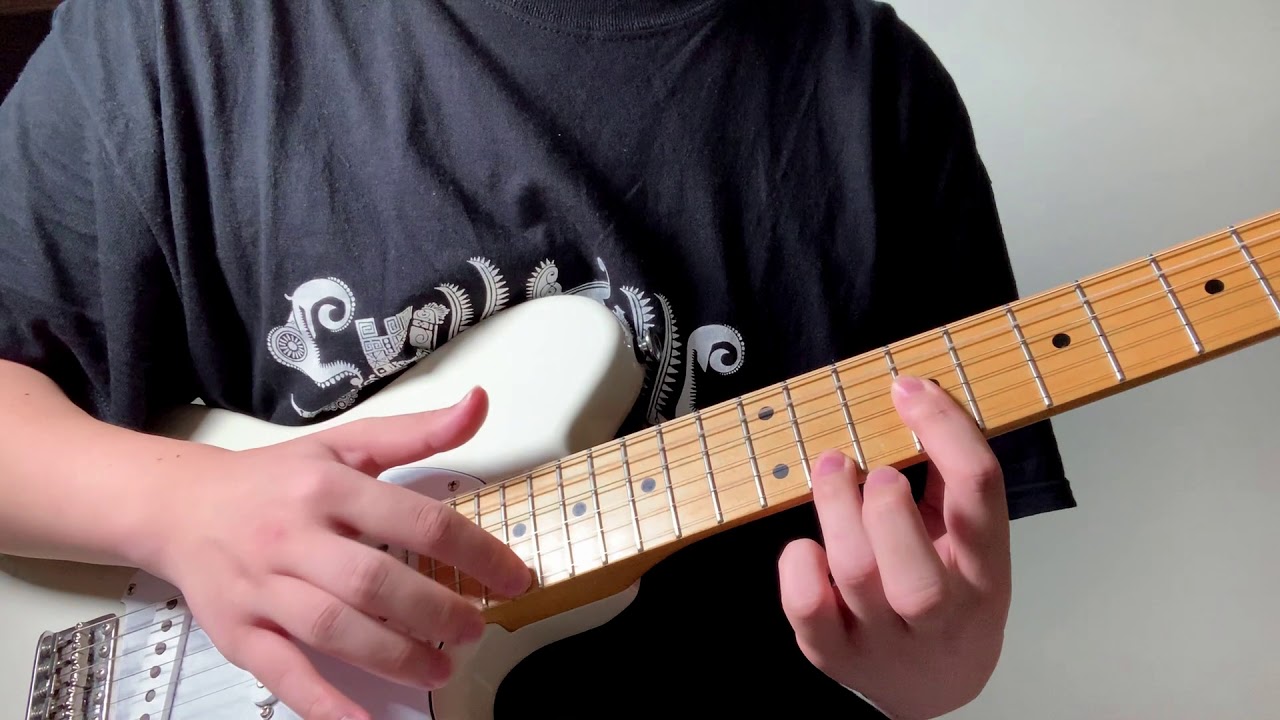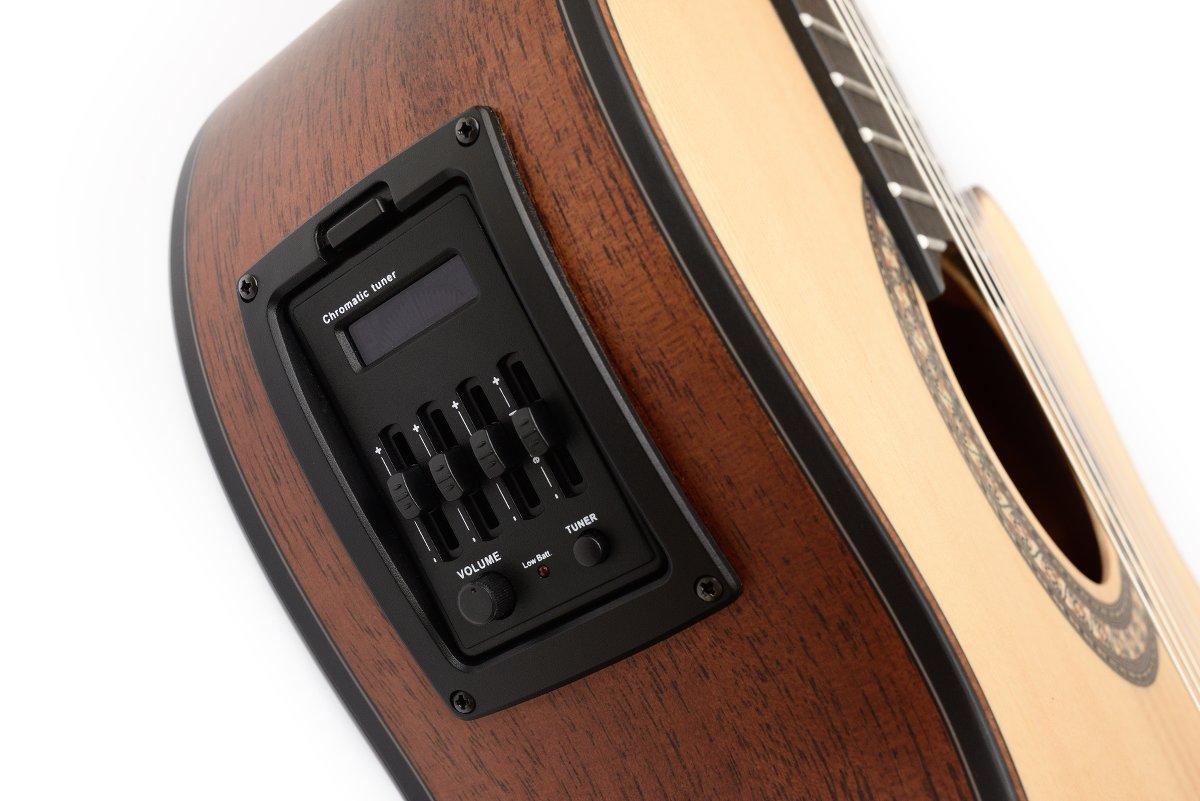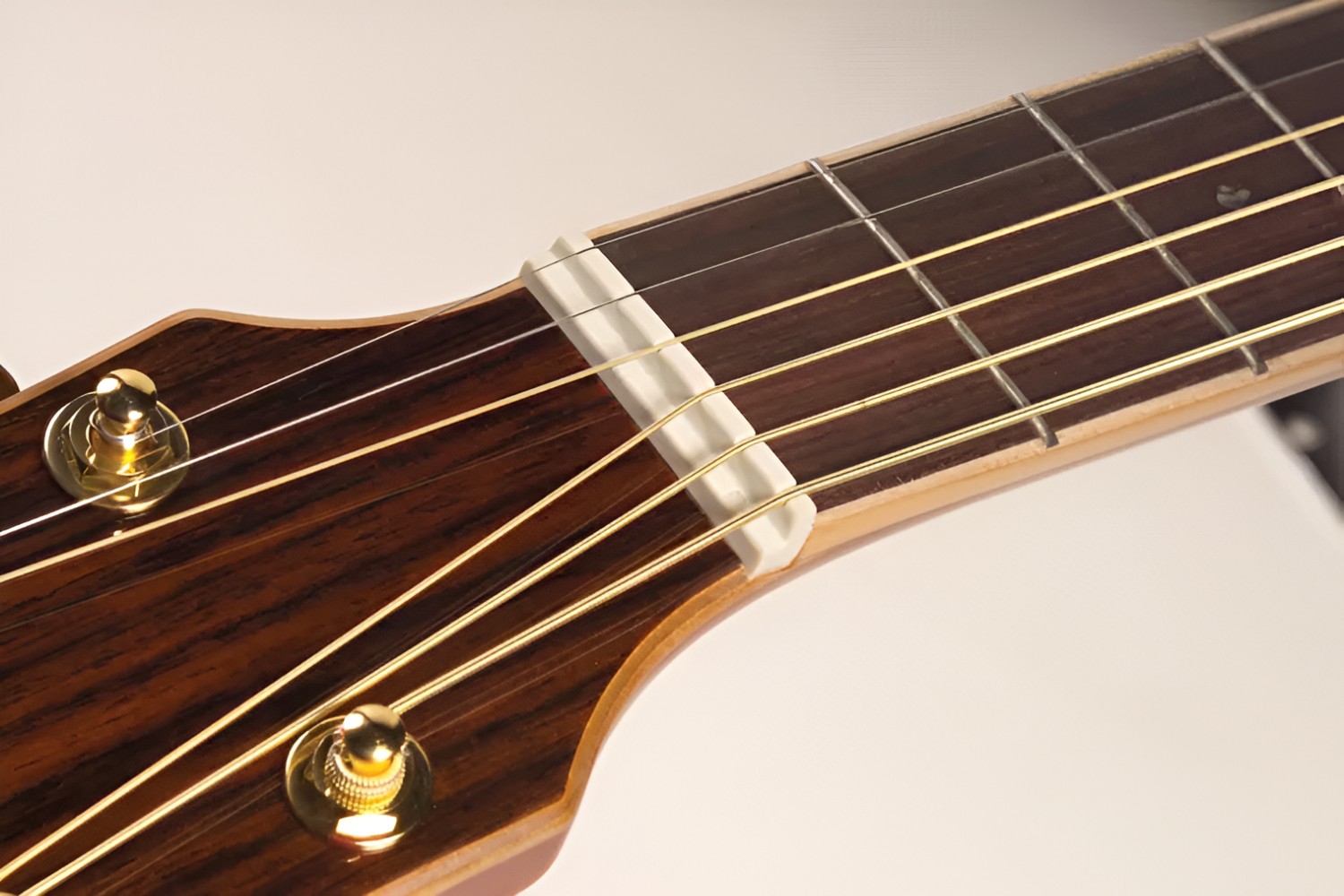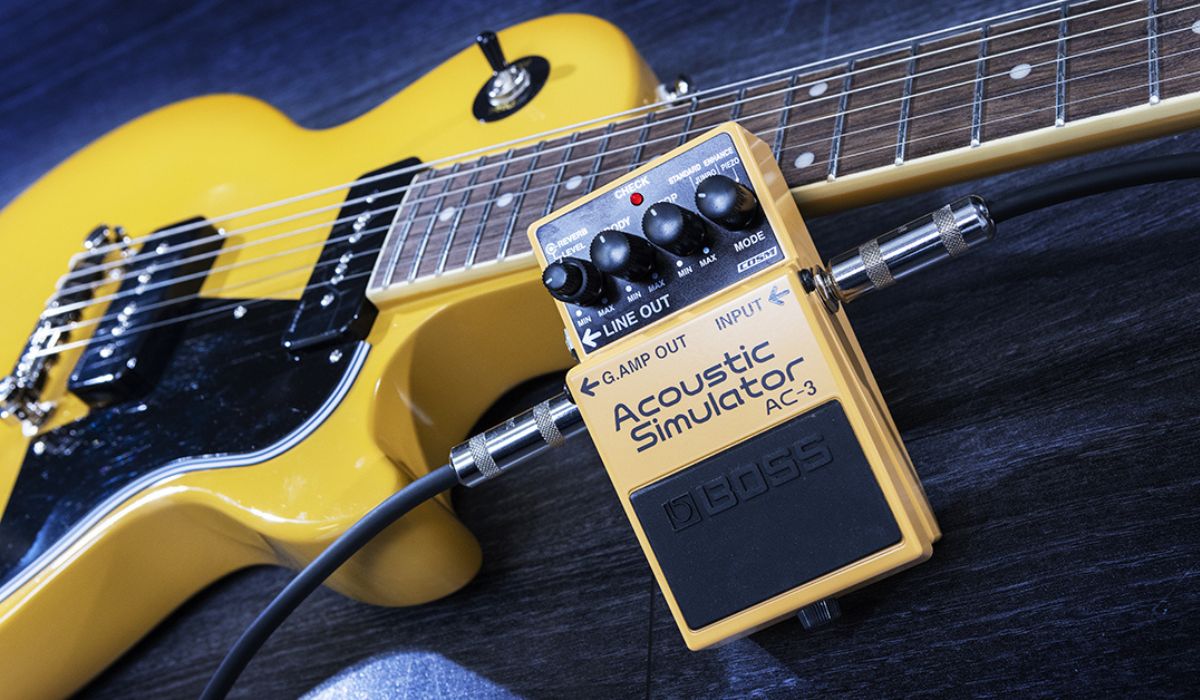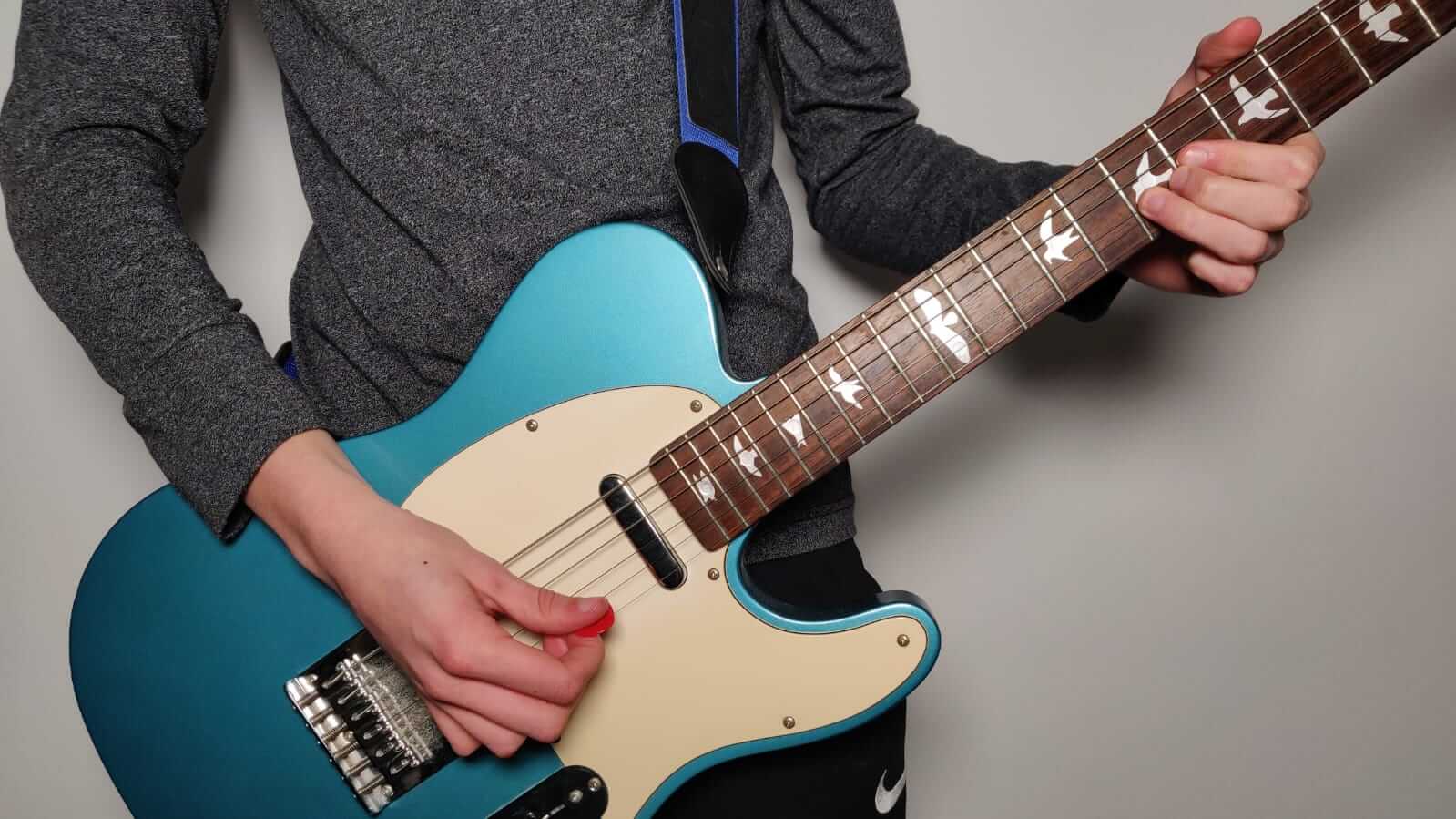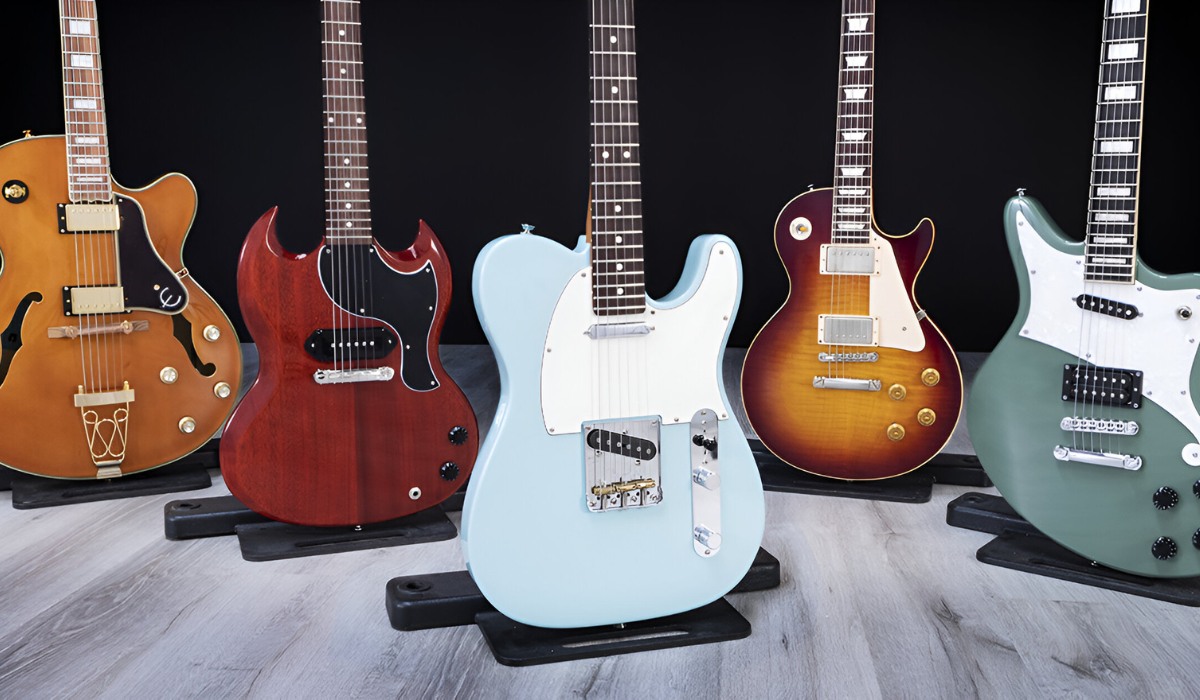Introduction
Welcome to the world of electric guitar tapping! This technique, popularized by guitar virtuosos such as Eddie Van Halen and Steve Vai, adds a unique and captivating dimension to guitar playing. Tapping involves using both hands to produce rapid, melodic notes on the fretboard, creating a mesmerizing sound that resonates with energy and skill. Whether you're a beginner seeking to master the basics or an experienced guitarist looking to refine your tapping prowess, this guide will equip you with the knowledge and techniques to elevate your playing to new heights.
The art of tapping allows guitarists to produce lightning-fast runs, cascading arpeggios, and dazzling solos that push the boundaries of traditional guitar playing. By mastering this technique, you can unleash a torrent of expressive melodies and dynamic rhythms, transforming your guitar into a versatile instrument capable of producing a wide array of captivating sounds.
In this comprehensive guide, we'll delve into the essential aspects of electric guitar tapping, including the selection of the right pick, optimal hand positioning, basic and advanced tapping techniques, and targeted exercises to hone your tapping skills. Whether you're drawn to the soaring solos of rock and metal or the intricate fingerstyle tapping of progressive and fusion genres, this guide will provide you with the tools and insights needed to embark on an exhilarating tapping journey.
So, grab your electric guitar, unleash your creativity, and get ready to delve into the captivating world of tapping. Whether you're aiming to emulate the iconic tapping passages of your guitar heroes or carve out your own unique tapping style, this guide will serve as your gateway to mastering the art of electric guitar tapping. Let's dive in and unlock the potential of this electrifying technique!
Choosing the Right Pick
When it comes to electric guitar tapping, the choice of pick plays a crucial role in shaping your sound and enhancing your tapping experience. The pick serves as the interface between your fingers and the strings, influencing the clarity, attack, and articulation of each note. Selecting the right pick involves considering factors such as thickness, material, and shape, all of which contribute to the tonal characteristics and playability of your tapping technique.
One of the key considerations when choosing a pick for tapping is its thickness. Thinner picks, typically ranging from 0.50mm to 0.73mm, offer increased flexibility and a lighter touch, making them well-suited for executing rapid tapping sequences with precision. The pliability of a thin pick allows for swift string contact and effortless maneuverability, enabling you to execute intricate tapping passages with ease. On the other hand, thicker picks, typically ranging from 0.88mm to 1.5mm, provide a more substantial feel and greater resistance, which can contribute to a more pronounced attack and fuller tone during tapping.
Material also plays a significant role in pick selection. Picks are commonly crafted from materials such as celluloid, nylon, Delrin, and various forms of plastic. Each material offers distinct tonal properties and tactile feedback, influencing the overall sound and feel of your tapping technique. Experimenting with different pick materials can help you discover the ideal balance of warmth, brightness, and responsiveness that complements your tapping style.
Furthermore, the shape of the pick can impact your tapping performance. Standard teardrop-shaped picks are versatile and widely used for tapping, providing a balanced blend of precision and comfort. Additionally, jazz-style picks with a smaller profile and a pointed tip offer enhanced control for intricate tapping patterns, while larger, rounded picks may provide a more substantial grip and surface area for executing aggressive tapping gestures.
Ultimately, the perfect pick for tapping is one that aligns with your playing preferences and facilitates seamless interaction with the strings. By experimenting with various pick thicknesses, materials, and shapes, you can fine-tune your tapping experience, refine your tonal palette, and unlock new possibilities for creative expression through this electrifying technique.
Holding the Guitar
Before delving into the intricacies of electric guitar tapping, it’s essential to establish a comfortable and ergonomic posture for holding the instrument. Proper positioning not only enhances your playing technique but also minimizes physical strain, allowing you to focus on refining your tapping skills without unnecessary discomfort or tension.
Begin by ensuring that the guitar is securely strapped over your shoulder at a height that allows for effortless access to the fretboard. The neck of the guitar should be positioned at an angle that facilitates easy reach and maneuverability across the frets, enabling you to navigate the fretboard with dexterity during tapping sequences. Additionally, maintaining a balanced posture and distributing the weight of the guitar evenly across your body can contribute to a more relaxed and sustainable playing experience, especially during extended tapping sessions.
When it comes to hand positioning, the fretting hand should be poised to execute tapping maneuvers with precision and fluidity. Position your fretting hand behind the neck of the guitar, ensuring that your fingers are poised to reach the desired frets for tapping. Maintain a relaxed yet poised posture, allowing your fingers to hover over the fretboard with a natural curvature, ready to engage in seamless tapping motions.
Conversely, the picking hand should adopt a poised yet relaxed stance, positioning the picking or tapping finger(s) in close proximity to the designated tapping area on the fretboard. By maintaining a comfortable and controlled posture for both hands, you can optimize your tapping technique, fostering a seamless and fluid interaction with the strings.
Furthermore, consider the angle at which the guitar is inclined relative to your body. Experiment with slight adjustments to the guitar’s tilt, finding a position that allows for optimal visibility and access to the fretboard while supporting a natural and relaxed posture. This personalized adjustment can significantly enhance your comfort and playing efficiency, empowering you to explore the full potential of electric guitar tapping with ease and confidence.
By prioritizing a well-balanced and ergonomic approach to holding the guitar, you can lay a solid foundation for mastering the art of tapping while promoting a sustainable and enjoyable playing experience. With a focus on comfort, accessibility, and posture, you’ll be well-equipped to embark on your tapping journey with confidence and ease.
Basic Tapping Technique
The fundamental principles of electric guitar tapping revolve around the seamless coordination of both hands to produce articulate and fluid notes on the fretboard. This technique typically involves using the fingers of the picking hand to tap the fretboard, generating rapid and melodic notes that complement the conventional picking and fretting motions. To master the basic tapping technique, it’s essential to focus on hand synchronization, finger placement, and string articulation, all of which contribute to the clarity and expressiveness of your tapping passages.
Begin by positioning your fretting hand on the neck of the guitar, anchoring your fingers over the designated frets where tapping will occur. Simultaneously, position the picking hand above the fretboard, with the tapping finger(s) poised to execute precise and controlled taps on the strings. As you initiate the tapping motion, focus on maintaining a relaxed yet assertive posture, allowing the tapping finger(s) to make clean and decisive contact with the strings.
When executing the tap, aim to strike the string with a swift and controlled motion, generating a clear and resonant note. It’s crucial to exert just enough force to produce a distinct sound without excessive pressure, facilitating a seamless transition between tapped notes and other playing techniques. Additionally, pay attention to the release of the tapping finger(s) after each tap, ensuring a swift and precise disengagement from the string to maintain clarity and articulation.
As you familiarize yourself with the basic tapping technique, focus on achieving a consistent and even tone across all tapped notes, refining your control and precision with each repetition. Experiment with varying degrees of force and finger placement to discover the nuances of tone and dynamics that can be achieved through different tapping approaches. Embrace a patient and deliberate practice regimen, gradually building speed and fluency while maintaining a keen focus on the clarity and expressiveness of each tapped note.
By honing the basic tapping technique, you’ll lay a solid foundation for exploring more advanced tapping variations and incorporating tapping seamlessly into your playing repertoire. Through dedicated practice and attentive refinement of your tapping fundamentals, you’ll cultivate the skills and confidence needed to unleash captivating melodies and dynamic rhythms with precision and flair.
Advanced Tapping Techniques
As you progress in your exploration of electric guitar tapping, delving into advanced techniques can elevate your playing to new heights of creativity and virtuosity. Advanced tapping techniques encompass a diverse array of approaches, including multi-finger tapping, tapping arpeggios, and incorporating tapping into complex chord progressions. These techniques expand the sonic possibilities of tapping, enabling you to craft intricate and expressive passages that showcase the full potential of this dynamic playing style.
Multi-finger tapping, also known as two-handed tapping, involves using multiple fingers from the picking hand to execute tapping sequences, unlocking a broader range of melodic and harmonic possibilities. By incorporating additional tapping fingers, you can create rapid and intricate note patterns, weaving complex melodies and harmonies with remarkable fluidity and dexterity. This technique offers boundless creative potential, allowing for the seamless integration of multiple voices and textures within a single tapping passage.
Exploring tapping arpeggios introduces a captivating dimension to your tapping repertoire, enabling you to articulate rich and harmonically dense arpeggiated sequences with remarkable clarity and expressiveness. By selectively tapping individual notes within arpeggio patterns, you can create cascading, bell-like tones that evoke a sense of depth and sophistication. Tapping arpeggios lend themselves to a wide range of musical styles, from neoclassical shredding to progressive rock and fusion, offering a versatile canvas for crafting compelling and evocative musical statements.
Furthermore, integrating tapping into complex chord progressions empowers you to infuse chordal passages with dynamic and percussive accents, adding a rhythmic and harmonic complexity to your playing. By incorporating tapping alongside conventional chord strumming or picking, you can create captivating rhythmic interplay and embellishments, enriching the harmonic texture of your compositions and improvisations.
Embracing advanced tapping techniques requires a dedicated focus on coordination, precision, and musical expression. As you venture into these techniques, prioritize gradual and deliberate practice, allowing yourself to become familiar with the nuanced demands of each approach. By cultivating a deep understanding of advanced tapping techniques and integrating them into your musical vocabulary, you’ll expand your artistic horizons and unlock a wealth of creative possibilities within the realm of electric guitar tapping.
Exercises to Improve Tapping Skills
Mastering the art of electric guitar tapping demands a dedicated and structured approach to practice, encompassing a range of exercises designed to enhance your tapping skills, coordination, and dexterity. These exercises target specific aspects of tapping technique, fostering precision, speed, and musicality while providing a platform for continuous growth and refinement. Whether you’re a novice seeking to solidify your foundational tapping abilities or an experienced guitarist aiming to push the boundaries of your technique, incorporating targeted exercises into your practice regimen can yield significant improvements in your tapping prowess.
One fundamental exercise for developing tapping proficiency involves practicing simple ascending and descending tapped note sequences across the fretboard. Begin by selecting a specific scale or melodic pattern and execute precise tapping motions to articulate the notes in a fluid and seamless manner. Focus on maintaining even spacing and articulation between each tapped note, gradually increasing the tempo as your comfort and control improve.
Another valuable exercise entails integrating tapping into scale runs and arpeggio patterns, allowing you to explore the integration of tapping within broader melodic contexts. By incorporating tapping into familiar scale shapes and arpeggio sequences, you can refine your ability to transition between conventional fretting and tapping techniques, fostering a cohesive and expressive approach to incorporating tapping into your playing.
To enhance your multi-finger tapping abilities, consider practicing exercises that involve tapping with multiple fingers on the picking hand. This can include executing rapid and synchronized tapping patterns across adjacent strings, fostering coordination and agility while expanding your capacity for crafting intricate and dynamic tapping passages.
Furthermore, rhythmic tapping exercises, such as accenting specific beats within a measure or incorporating tapping into syncopated rhythmic patterns, can sharpen your rhythmic precision and enhance your ability to integrate tapping seamlessly into diverse musical contexts.
As you engage in these exercises, maintain a deliberate and focused practice approach, paying close attention to the clarity, dynamics, and fluidity of your tapping motions. Embrace a gradual and systematic progression, allowing yourself to build proficiency and confidence with each exercise before advancing to more complex variations.
By incorporating these targeted exercises into your practice routine, you’ll cultivate a robust foundation of tapping skills, expand your technical capabilities, and unlock new avenues for creative expression through the dynamic and captivating art of electric guitar tapping.
Conclusion
Congratulations on embarking on a transformative journey into the realm of electric guitar tapping. Throughout this guide, you’ve delved into the essential aspects of tapping, from selecting the right pick to mastering basic and advanced techniques, and integrating targeted exercises to refine your tapping skills. By immersing yourself in the art of tapping, you’ve unlocked a wealth of creative possibilities and expanded your musical horizons, paving the way for exhilarating and expressive guitar playing.
As you continue to explore the captivating world of tapping, remember that patience, perseverance, and focused practice are your allies in honing this dynamic technique. Embrace the process of gradual improvement, allowing yourself to cultivate precision, speed, and musicality in your tapping endeavors. Whether you’re drawn to the soaring solos of rock and metal, the intricate fingerstyle tapping of progressive and fusion genres, or the innovative applications of tapping in diverse musical contexts, your dedication to mastering this technique will undoubtedly yield rewarding results.
Furthermore, as you integrate tapping into your playing repertoire, embrace the opportunity to infuse your unique voice and artistic sensibilities into your tapping expressions. With each tapped note and cascading arpeggio, you have the power to convey emotion, energy, and creativity, shaping your musical identity through the dynamic and expressive language of tapping.
Above all, approach your tapping journey with a spirit of exploration and discovery. Embrace the challenges and triumphs that accompany the pursuit of tapping mastery, and allow your passion for music to fuel your growth and evolution as a guitarist. Whether you’re crafting intricate tapping passages, unleashing lightning-fast runs, or weaving melodic textures with multi-finger tapping, remember that your journey as a tapper is a testament to your dedication, creativity, and love for the art of guitar playing.
As you pick up your electric guitar and embark on your next tapping adventure, remember that the rhythmic pulse of tapping and the melodic resonance of each note are reflections of your commitment to musical expression. With each tap of your finger, you breathe life into the strings, creating a symphony of sound that resonates with passion and artistry. Embrace the joy of tapping, the thrill of discovery, and the boundless potential that awaits as you continue to explore, innovate, and elevate your tapping prowess.







